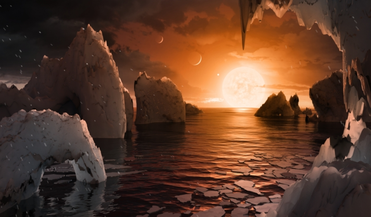 22 February 2017
NASA announces the discovery of first-ever exoplanet system with seven Earth-size planets
22 February 2017
NASA announces the discovery of first-ever exoplanet system with seven Earth-size planets
..."It is also the best target yet for studying the atmospheres of potentially habitable, Earth-size worlds." The TRAPPIST-1 exoplanets are located so close to ... for the first time in the habitable zone is a remarkable step forward toward that goal.”
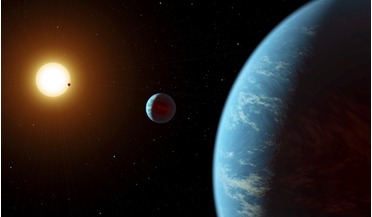 19 October 2020
Astronomers identify a true water-world that could have an ocean over 100 kms deep
19 October 2020
Astronomers identify a true water-world that could have an ocean over 100 kms deep
...period of around 24 days, placing it just inside the habitable zone. LHS1140b’s characteristics and location within a region where it ... of a third planet in the system, right beyond the habitable zone with a 79 day period, adds Lillo-Box. However,...
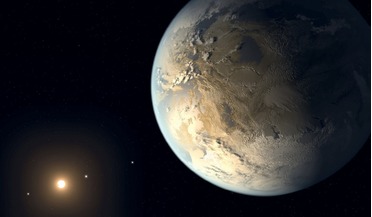 August 2018
Exoplanet census promises radical discoveries
August 2018
Exoplanet census promises radical discoveries
... the starshade. To properly control diffraction and achieve a small enough angle to see Earth-like planets in the habitable zone around nearby stars, the starshade must be tens of metres in diameter and flown tens of thousands of kilometres from...
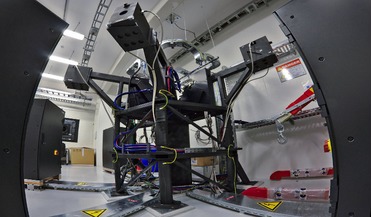 06 December 2017
The next generation planet hunter is here!
06 December 2017
The next generation planet hunter is here!
... as ESPRESSO will be able to detect some of the lightest planets ever found and ones that are in the habitable zone of a low mass star - planets that are synonymous with our own rocky world and ones that...
 October 2015
Finding Earth-like worlds: the tale of how Kepler-452b was discovered
October 2015
Finding Earth-like worlds: the tale of how Kepler-452b was discovered
... on improving the sensitivity and efficiency of the pipeline, so that we can find these Earth-size planets in the habitable zone of the Sun-like stars we’re observing. Kepler studied the same starfield in the constellation of Cygnus, so that its...
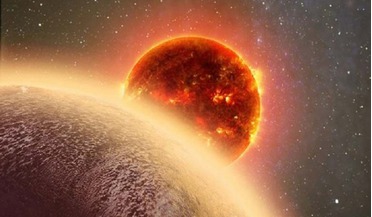 02 March 2016
Using MUSCLES to test for life on other planets
02 March 2016
Using MUSCLES to test for life on other planets
... of the atmospheres, and possibly the surfaces, of Earth-size planets in the habitable zones around nearby stars. The habitable zone (HZ) or ‘Goldilocks Zone’ is seen as the location around a star where liquid water may exist on a planet...